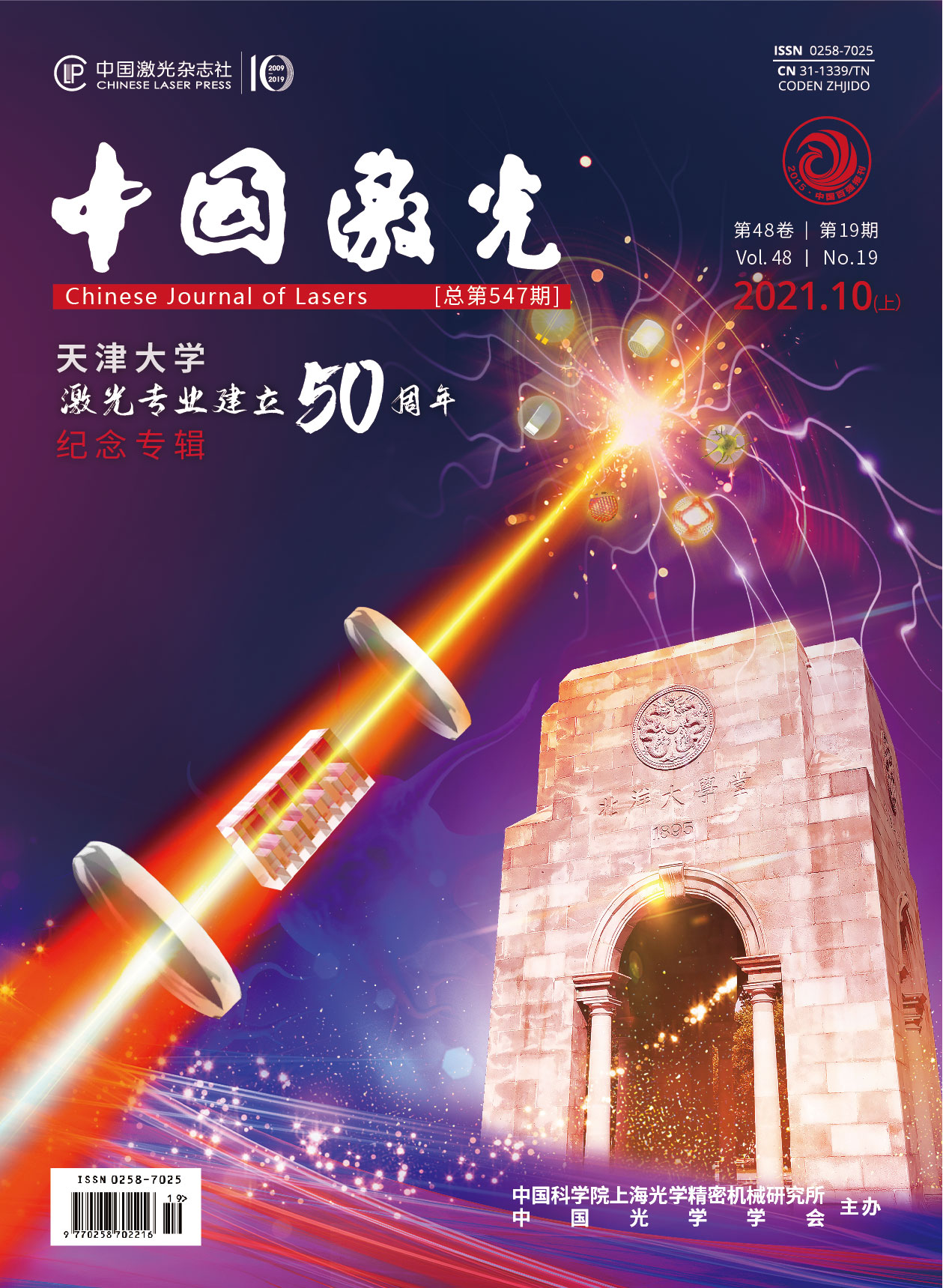液态水辐射源产生太赫兹波的研究进展  下载: 879次
下载: 879次
Significance Terahertz (THz) wave, whose frequency range lying between the infrared wave and microwave, is a section of the electromagnetic spectrum with unique features. Broadly, the THz frequency range covers the spectral region from 0.1 to 30 THz, but researchers universally define 0.1--10 THz as the THz band. Owing to the lack of suitable THz radiation sources and detectors, THz wave, once known as "THz Gap" for ages, became the last segment of the entire electromagnetic spectrum to be fully explored. Nevertheless, the ultrafast optoelectronics technology and microscale semiconductor technology, which received rapid development in the 1980s, made emerging from the previous dilemma possible for researchers in this field. Since then, THz technology has been widely used in scientific research and practical application, such as medical treatment, nondestructive testing, national defense, safety inspection, and communication.
Among various branches of THz technologies, THz photonics undoubtedly earns a place in the current hotspots of the field. However, recently, studies on THz photonics focused more on the linear response of material rather than the nonlinear response, and the absence of suitable THz radiation sources with strong field strength might be to blame for this study status. In China, the 973 Program and several other projects associated with fundamental study supported the study of THz photonics well, unfortunately, the related study work is still focused on linear THz systems. Thus, exploiting the technology for building a more suitable THz radiation source system with stronger THz field strength, along with its optimization, is an essential prerequisite for further expanding the practical area of THz waves.
As the most common liquid in life, water plays an important role in academic research. However, water has not been considered an appropriate THz radiation source for a long time owing to its strong absorption in the THz frequency range. While recently, some groups have experimentally confirmed the feasibility of THz wave generation from water under the excitation of a femtosecond laser, and several theoretical models are proposed for the mechanism of the generation processes. Thus, summarizing the current research progress in this field for the study of THz wave generation from water and other liquids is significant.
Progress Under the efforts of professor Zhang Xicheng and his team, a thin water film (~170 μm) under femtosecond laser’s excitation was historically used for THz wave generation in 2017 (
To weaken the total internal reflection at the flat water-air interface in water film, a water line was used for solving this problem. In 2018, strong THz radiation generated from a water line of 200-μm diameter under the femtosecond laser’s excitation was first reported in the experiment (
Although the phenomenon is similar to air, the explanation for the mechanism of THz generation from water is still under study. While other kinds of nonlinear effects existed during the photoionization process in water and the different ionization mechanisms of these two matters may partially account for this mystery. Currently, the theoretical models to explain the phenomenon of THz generation from water include the dipole array model, ponderomotive-force-induced photocurrent model, unidirectional pulse propagation equation model, and radiation field dynamics model.
Conclusions and Prospect The study on THz generation from liquid water would be beneficial for researchers to better understand the interaction between water and intense lasers, and it serves a significant role in the further study of potential THz radiation sources. Based on these reasons, research progresses on THz generation from liquid water recently, are reviewed in this article, which includes experimental schemes for two liquid water sources, the factors related to the improvement of the generated THz energy, as well as the design ideas for relevant theoretical models. Finally, the prospect of this field based on our understanding and the current study achievements is proposed.
戴建明, 张祎帆, 陈宇轩, 何宇航, 田震. 液态水辐射源产生太赫兹波的研究进展[J]. 中国激光, 2021, 48(19): 1914001. Jianming Dai, Yifan Zhang, Yuxuan Chen, Yuhang He, Zhen Tian. Research Progress on Terahertz Wave Generation from Liquid Water[J]. Chinese Journal of Lasers, 2021, 48(19): 1914001.







